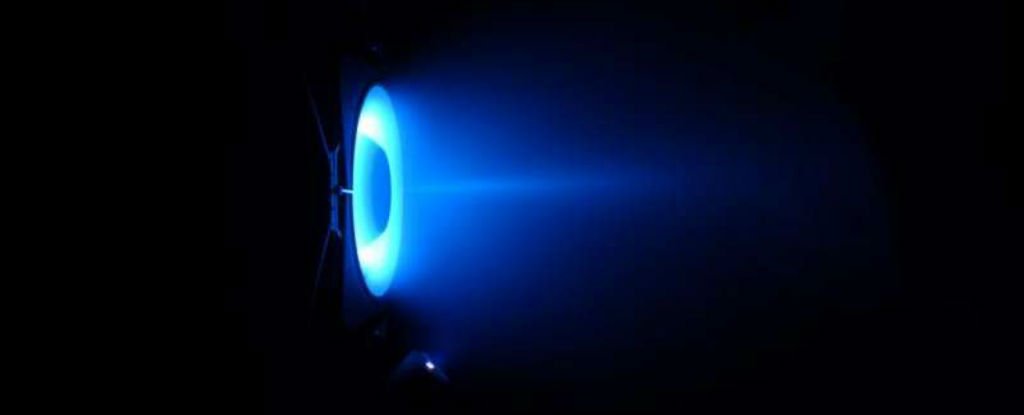
Hall Thrusters
Hall thrusters combine a magnetic field and a trapped electron cloud to create a completely hollow “virtual” cathode. A small amount of propellant gas (like xenon) is injected into the thruster’s channel, producing a charged ion stream. Because these ions are too heavy to be caught up in the magnetic field of the virtual cathode, they remain unimpeded as they travel through to be neutralized. This creates a low-pressure plasma discharge, producing thrust in the opposite direction from that of the ion flow. Unfortunately, the discharge channel wall of the Hall thruster—the part that contains the anode, virtual cathode, and electron cloud—is constantly bombarded with high-energy ions, wearing the wall down. The whole engine would eventually need to be recalled to have the wall repaired or replaced.
The Innovation
Scientists from France decided to remove the discharge channel wall altogether. They were able to optimize this advanced type of electric rocket thruster, with the plasma stream being able to travel at a whopping 72,420 km/h to launch a spacecraft. This number should allow space travel with 100 million times less fuel than conventional chemical rockets. Hall thrusters have a lifespan of only around 10,000 hours, five times less than what normal space explorations require. It is still unclear how much this new design could extend the lifespan of the Hall thruster, but if the researchers can get it up around the 50,000-hours mark it could revolutionize space exploration in the future.